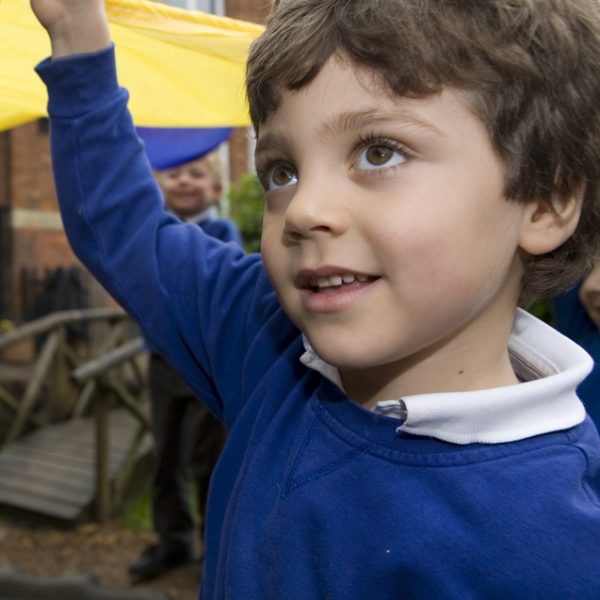The Early Years curriculum at Cedars Primary School and Nursery is taught over 5 terms in Nursery and over 1 year in Reception.
It is organised into seven areas of learning:
Prime areas: Personal, Social and Emotional Development, Communication & Language; Physical Development.
Specific areas: Literacy; Maths; Understanding the World; Expressive Arts & Design.

We believe learning is holistic and cannot be compartmentalized. One experience may provide children with opportunities to develop a range of competencies, skills and concepts across several areas of learning. Each area of learning works towards a number of relevant Early Learning Goals, which most children are expected to achieve by the end of the Foundation Stage.
We see play as a central tool for learning in early years as it is a key way in which young children learn with enjoyment and challenge. Phonics, Reading, Writing and Maths are taught daily.
Making Relationships
Children play co-operatively, taking turns with others. They take account of one another’s ideas about how to organise their activity. They show sensitivity to others’ needs and feelings, and form positive relationships with adults and other children.
Self Confidence and Self-Awarenes
Children play co-operatively, taking turns with others. They take account of one another’s ideas about how to organise their activity. They show sensitivity to others’ needs and feelings, and form positive relationships with adults and other children.
Making Feelings and Behaviour
Children talk about how they and others show feelings, talk about their own and others’ behaviour, and its consequences, and know that some behaviour is unacceptable. They work as part of a group or class, and understand and follow the rules. They adjust their behaviour to different situations, and take changes of routine in their stride.
Listening and Attention
Children listen attentively in a range of situations. They listen to stories, accurately anticipating key events and respond to what they hear with relevant comments, questions or actions. They give their attention to what others say and respond appropriately, while engaged in another activity.
Understanding
Children follow instructions involving several ideas or actions. They answer ‘how’ and ‘why’ questions about their experiences and in response to stories or events.
Speaking
Children express themselves effectively, showing awareness of listeners’ needs. They use past, present and future forms accurately when talking about events that have happened or are to happen in the future. They develop their own narratives and explanations by connecting ideas or events.
Moving and Handling
Children show good control and co-ordination in large and small movements. They move confidently in a range of ways, safely negotiating space. They handle equipment and tools effectively, including pencils for writing.
Health and Self-Care
Children know the importance for good health of physical exercise, and a healthy diet, and talk about ways to keep healthy and safe. They manage their own basic hygiene and personal needs successfully, including dressing and going to the toilet independently.
Reading
Children read and understand simple sentences. They use phonic knowledge to decode regular words and read them aloud accurately. They also
read some common irregular words. They demonstrate understanding when talking with others about what they have read.
Writing
Children use their phonic knowledge to write words in ways which match their spoken sounds.
They also write some irregular common words. They write simple sentences which can be read by themselves and others. Some words are spelt correctly and others are phonetically plausible.
Numbers
Children count reliably with numbers from one to 20, place them in order and say which number is
one more or one less than a given number. Using quantities and objects, they add and subtract two
single-digit numbers and count on or back to find the answer. They solve problems, including doubling, halving and sharing.
Shape, Space and Measure
Children use everyday language to talk about size, weight, capacity, position, distance, time and money to compare quantities and objects and to solve problems. They recognise, create and describe patterns. They explore characteristics of everyday objects and shapes and use mathematical language to describe them.
People and Communications
Children talk about past and present events in their own lives and in the lives of family members.
They know that other children don’t always enjoy the same things, and are sensitive to this. They know about similarities and differences between themselves and others, and among families, communities and traditions.
The World
Children know about similarities and differences in relation to places, objects, materials and living
things. They talk about the features of their own immediate environment and how environments might vary from one another. They make observations of animals and plants and explain why some things occur, and talk about changes.
Technology
Children recognise that a range of technology is used in places such as homes and schools. They select and use technology for particular purposes.
Exploring and Using Media and Materials
Children sing songs, make music and dance, and experiment with ways of changing them. They safely use and explore a variety of materials, tools and techniques, experimenting with colour, design, texture, form and function.
Being Imaginative
Children use what they have learnt about media and materials in original ways, thinking about uses
and purposes. They represent their own ideas, thoughts and feelings through design and technology, art, music, dance, role play and stories.
We work towards the Early Learning Goals
We use observations of children in child-initiated and adult directed activities.
We use the observations to plan effectively to meet children’s learning needs.
We monitor the concepts and skills that children are developing.
Children are assessed and monitored effectively to show children’s progression.
We record children and parents viewpoints.
At the end of the year we complete the EYFS profile.
We support children with transition into Key Stage 1.